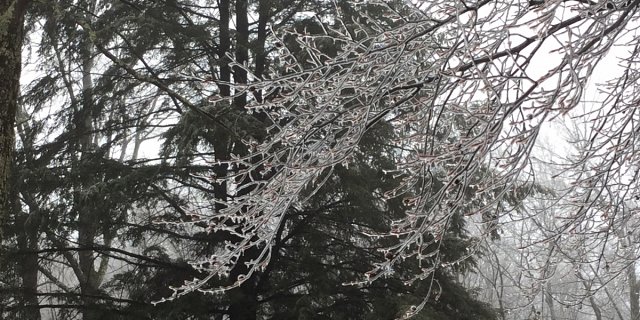Wintertime, More or Less
By Russell Russ
You cannot judge a complete month’s weather by looking at just a few days. The first few days of February were quite cold with below zero temperatures. A few days later, temperatures were in the mid-fifties. So, what was the rest of the month like? The answer is mostly average for February. All local ponds and lakes stayed ice covered. Snow depth at the weather station ranged from 7 inches down to just a trace then back up to 7 inches. Last year, springtime strongly inserted itself during February resulting in the third warmest February on record. Not the case this year. February is still more or less a wintertime month here in Norfolk.
The month’s low temperature of minus 5 degrees was observed on February 1. The high temperature of 57 degrees was observed on February 4. The February 4 high of 57 degrees was a record high for that date, beating the old record of 54 from 1991. The average monthly mean temperature was 24.2 degrees, 2.1 degrees above normal. This is above average, but not far from normal. The warmest February on record was in 2002 with 30.7 degrees. The coldest was in 1934 with 9.0 degrees, making that also the coldest month of any month as recorded at this weather station over the last 88 years. Norfolk’s coldest month occurred many years ago, but cold months can still happen in this day and age. The second coldest month of any month was observed in February 2015 with a monthly average temperature of 10.9 degrees.
Total precipitation recorded for the month was 3.10 inches, 0.54 inch below normal. The 2019 calendar year, January and February, total precipitation amount of 9.08 inches is 1.42 inches above normal. Monthly total precipitation amounts in Norfolk are evenly distributed throughout the year, with average monthly amounts ranging from 3.64 inches to 4.87 inches. February happens to be the month with, on average, the least amount of precipitation here in Norfolk.
February’s monthly snowfall total of 11.3 inches was 9.2 inches below normal. Norfolk and much of southern New England are not seeing an abundance of snowfall this winter. As has been the case for a good part of this winter, Norfolk is getting its fair share of wintery precipitation. There has been some snow, but many times it has been preceded or followed by sleet, freezing rain and/or rain. Northern New England and northern New York State have seen less mixing of precipitation and these areas have recorded much more snowfall than Norfolk this winter.
The 2019 calendar year snowfall total through February is 26.7 inches. This is 14.6 inches below normal. It is also exactly 10 inches less than Norfolk’s calendar year snowfall total at this time last year. The snowfall total for this winter season, October through February, is 44.0 inches. This is 21.7 inches below normal. Norfolk could be flirting with a high ranking low snowfall winter, but March and April are still to come and both can produce some decent snowfall totals.
A look ahead into March through mid-month shows that wintertime continues to hold on, and in much the same way it has been all winter long, with a variety of cold and warm and rain and snow. Most lakes and ponds were still ice covered, higher elevations and forested areas in town were holding on to at least some snow and temperatures were on average cold for March. March’s monthly temperature was running nearly 5 degrees below normal. Both total precipitation and snowfall were well below normal. March weather can be wild around here, but so far this year it has been fairly tame. Tame, but definitely on the colder side.


